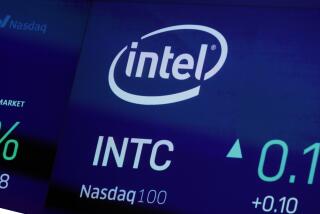GM Set to Announce More Cuts : Automobiles: With domestic losses put at an unprecedented $6 billion, the beleaguered firm is expected to trim thousands more white-collar jobs, cut executive pay and shut more plants.
- Share via
DETROIT — General Motors Corp., suffering massive losses in its North American car and truck business, said Wednesday that it will disclose another major retrenchment next week and take a big charge against earnings.
GM is expected to announce the elimination of thousands more white-collar jobs, cuts in executive pay and further plant closings, industry analysts said. There have also been rumors of a high-level management shake-up.
The pending actions were interpreted at the United Auto Workers union as setting the stage for GM to formally ask for relief from its expensive 1990 labor agreement, which has boosted labor costs twice as fast as expected.
With GM headed for the worst year in its history, cutbacks of some type have been hinted at for months. GM’s failure to act sooner has sent the price of its stock tumbling to a four-year low on Monday and weakened its credit ratings.
Chairman Robert C. Stempel said in a statement that the company’s board has approved “major actions” to “improve profitability and cash flow in 1992 and beyond.” The tersely written announcement gave no details. It only said that news would come next week.
The company said the size of the charge against earnings is still under review but will be less than the $2.1-billion write-down GM took in November, 1990, when it announced an earlier round of plant shutdowns.
Wednesday’s statement was apparently intended to assure Wall Street that cost-cutting moves are forthcoming, but the lack of details was unsettling, said auto analyst John Casesa at Wertheim Schroder & Co.
“They haven’t said when or how much. Geez, you’d think after all this time, shouldn’t the reviews be done?” Casesa asked. Wall Street was not impressed by the announcement. GM stock lost 62.5 cents to close at $27.875 on the New York Stock Exchange.
Stempel said there would be steps “related to improving GM’s North American capacity utilizations,” a reference to the fact that the company still has far more factory space than it needs in its shrunken market position.
“We’ll see some fairly large white-collar cutbacks,” said David Cole, director of an automotive think tank at the University of Michigan. “The key thing for GM is not to do something in the short term that would compromise its long-term strategy. Wall Street wants to see an atomic bomb go off, but I think that could be very dangerous.”
Casesa said he expects GM to close two or three plants and take aim at its 100,000 auto-related white-collar employees, where an early retirement program has already cut 6,000 jobs out of a targeted 15,000 to be shed by 1993. The ante could be raised to 20,000 or more, he said, because non-unionized workers are “the path of least resistance.”
Salaried workers have already been denied this year’s $600 year-end bonus, a perk the UAW refused to give up for its GM hourly members. Union officials also predict that GM will cut into the compensation of its top executives.
A union source said such steps would mark GM’s attempt to show “equality of sacrifice” before asking the UAW for relief on labor costs, repeating a process first played out during the auto industry’s collapse in the early 1980s. But he said the union, whose officers are up for reelection next summer, will never agree to concessions.
“The fools now want to go to the UAW five months before the union elections. They can’t put the union in that position,” the source said.
Even without unusual charges, the world’s largest auto maker is expected to lose more than $2.5 billion this year. Profits elsewhere will only partly offset domestic car and truck losses estimated by analysts at an unprecedented $6 billion.
GM lost 12% of the U.S. car market in the 1980s, but some thought that it was poised for recovery a year ago--until the recession took hold. Though the company’s market share has stabilized, GM has not downsized its huge manufacturing network enough to match its smaller role.
As a result, GM has been hit harder financially by the recession and fierce price competition than either Ford Motor Co. or Chrysler Corp., which acted sooner.
At a year-end news briefing Wednesday, Ford President Philip E. Benton said the No. 2 auto maker can get through the economic crunch without further retrenchment, but commented that GM “has a longer road to travel.”
Over the past year, GM has announced the permanent closure of six assembly plants, including its sole remaining West Coast facility in Van Nuys, which is due to shut down for good next year.
But by one estimate, GM still has the capacity to build 1.3 million more cars than it can expect to sell next year with a modest recovery in the car market. Thus, as many as four of 28 remaining assembly plants are thought to be vulnerable, including facilities in Doraville, Ga., and Fairfax, Kan. Stempel has vowed to be running his plants at 100% of capacity by the end of next year.
Speculation about a managerial shuffle has focused on Lloyd Reuss, GM’s president, who is responsible for its domestic car and truck business. Among the scenarios being talked about inside GM is Reuss being moved to head of the company’s EDS and Hughes Electronics units and being replaced by Vice Chairman John F. Smith Jr., head of international operations.






